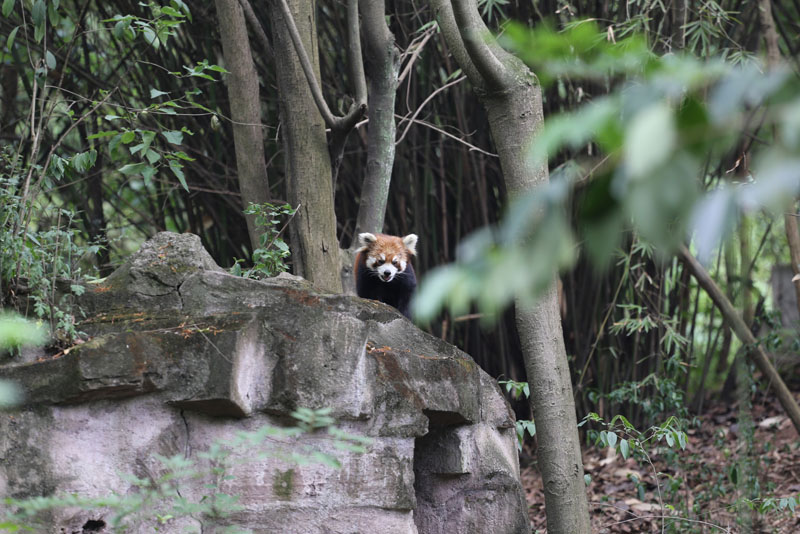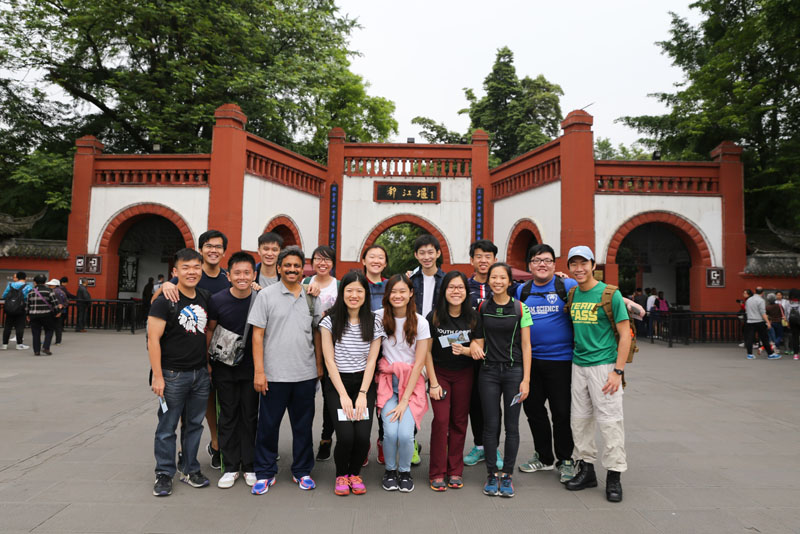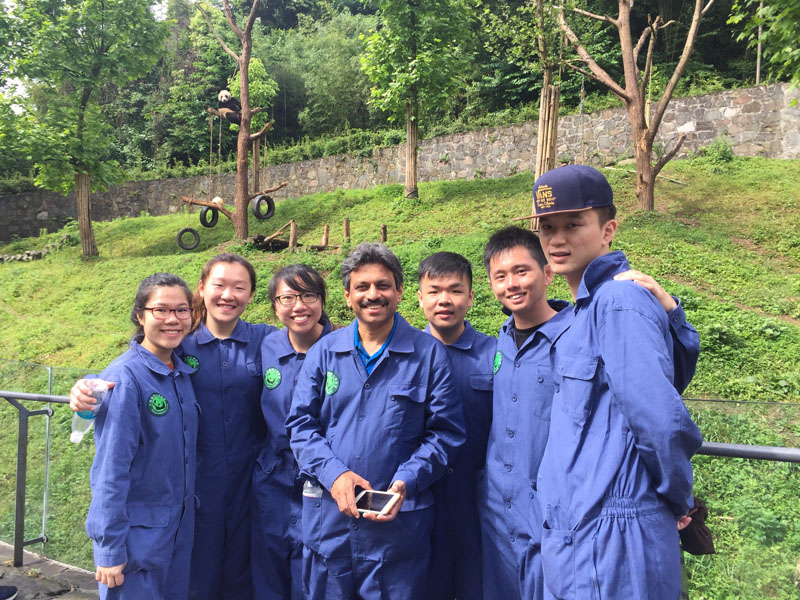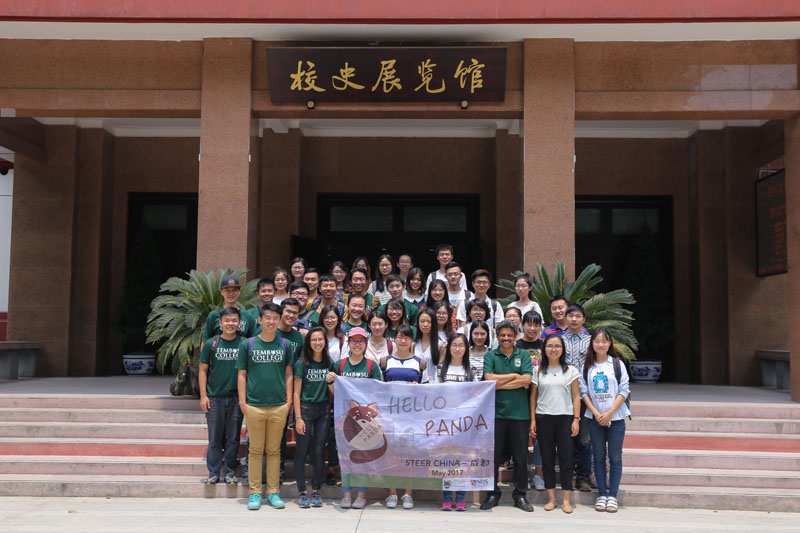Exploring Sustainable Development and Nature Conservation
STEER Sichuan
After a year of planning, a group of 14 Tembusu students embarked on a learning journey of sustainable development and nature conservation to Sichuan, China under the mentorship and guidance of Ponya Residential Fellow A/P Prakash Hande. The Ponya, also known as the ‘Red Panda’, is Tembusu’s House Animal of the year and is one of the main themes for the trip.

The Red Panda, AKA the Ponya, spotted in the Panda Research Base
We began our journey in Chengdu, where we were warmly welcomed by the Centre Director if IE Singapore (Chengdu Chapter), who gave a condensed and insightful introduction of the city’s economy and culture. We then headed north to Du Jiang Yan and marveled at the ancient, ingenious invention of an irrigation system which manipulates the natural flow of the water to regulate river discharge in Chengdu City.

Team photo taken at the Entrance of Du Jiang Yan
The following day, we spent our day volunteering at China Conservation & Research Center for the Giant Panda, Center for Disease Control, making panda cake, feeding pandas, cleaning their enclosures and learning about the efforts put into conservation of these species, the lives of the pandas and their caretakers.

Gearing up to Clean Panda Enclosures!

Giant Panda in the Panda Research Base
The Giant Panda is one of the world’s iconic symbol for wildlife conservation. In September 2016, this species was upgraded from ‘endangered’ to ‘vulnerable’ on the Red List of Threatened Species, managed by the International Union for Conservation of Nature (IUCN) due to the conservation efforts of the Chinese to increase their population and habitats. The experience at the panda base paved way for a deeper understanding for conservation of Giant Pandas, which led to a meaningful intellectual discussion on conservation of various animal species and its motivations.
We also visited the Wenchuan Earthquake Memorial, the Jiuzhaigou Valley, a moon bear sanctuary run by Animals Asia, attended classes by lecturers of Si Chuan Univerisity (SCU) and Chengdu University of Traditional Chinese Medicine, museums and other notable destinations in the area.
There were many insights gained from the experiences and as we share our individual perspectives with the rest of the team, we were able to explore these ideas further. Our team hope to share these invaluable lessons learnt with the rest of the college through various means. We are currently working on these projects – do look out for it during the next semester!
Below are more photographs from the trip.

Crossing a River in Jiuzhaigou Valley

Bears in Animals Asia Bear Sanctuary

Paying Tribute to the Victims of the Wenchuan Earthquake

A group photo with the students from Si Chuan University
STEER China (Si Chuan) would like to thank Tembusu College, NUS International Relations Office (STEER), IE Singapore (YTP) and everyone who has helped us in one way or another to make this trip a successful one.

